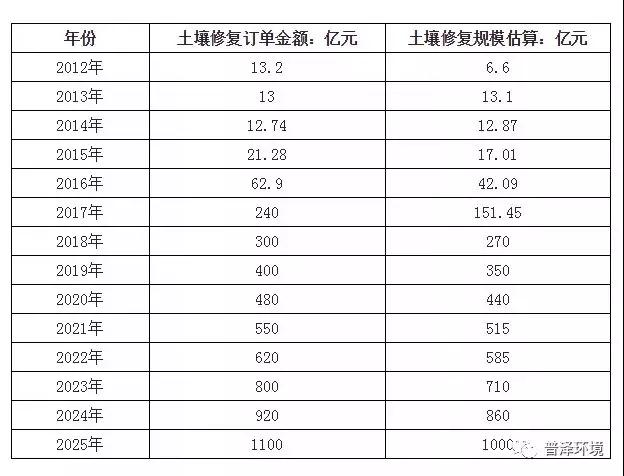On the market scale of soil remediation industry
Pollutants generated by human activities enter the soil and accumulate to a certain extent, causing soil quality to deteriorate, and then causing certain indicators in crops to exceed national standards, which is called soil pollution. Soil pollution will change the nature of the soil to a large extent, cause soil compaction, imbalance in pH balance, destroy the soil microbial ecosystem, reduce crop production and quality of agricultural products, pollute groundwater and surface water, and cause volatile organic pollution. It will also affect the quality of the atmospheric environment for a long time. At the same time, some heavy metal ions will enter the human body through the bioaccumulation of plants and endanger human health.
Analysis of the main nature and source of soil pollution

From 2005 to February 2013, the Ministry of Environmental Protection and the Ministry of Land and Resources jointly organized a national soil pollution survey. The survey scope is the land territory of the People's Republic of China (excluding Hong Kong Special Administrative Region, Macau Special Administrative Region and Taiwan). The survey points cover all cultivated land, part of forest land, grassland, unused land and construction land. The actual survey area is about 630 Million km2.
The results of the survey showed that the country’s total soil over-standard rate was 16.1%, of which the proportions of slightly, lightly, moderately and heavily polluted points were 11.2%, 2.3%, 1.5% and 1.1%. The main pollution types are cadmium, mercury, arsenic, copper, lead, chromium, zinc, nickel, 8 inorganic types, BHC, DDT, and polycyclic aromatic hydrocarbons, followed by 3 types of organic pollutants. The proportion of composite pollution is relatively small. Among them, the number of over-standard points for inorganic pollutants accounted for 82.8% of all over-standard points. Cultivated land soil is the focus of this soil pollution investigation, and the scope of the investigation has been fully covered, with a point exceeding rate of 19.4%, exceeding the national soil pollution level. Among them, the proportions of light, light, moderate and severe pollution points are 13.7%, 2.8%, 1.8% and 1.1% respectively. The main pollutants are cadmium, nickel, copper, arsenic, mercury, lead, DDT and polycyclic aromatic hydrocarbons.
At the same time, due to the special structure of the soil-groundwater system and the diversity of pollutant migration and transformation pathways, the pollution of the site system is very different from the pollution of other environmental systems. It is often concealed and lagging, cumulative and irreversible, the severity of the hazard and difficult to manage, the lack of unified treatment technology for various site pollution, and the high cost of remediation of contaminated sites, long periods, and obvious externalities. At present, they mainly rely on Limited financial funds.
At present, in the soil remediation industry, there are more than one hundred soil remediation technologies, and there are more than ten commonly used technologies, which can be roughly divided into three methods: physical, chemical and biological.
01 Types and characteristics of soil remediation
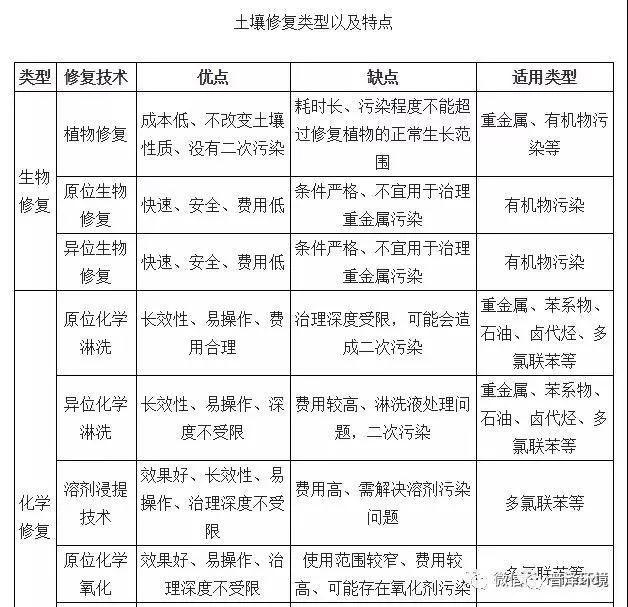
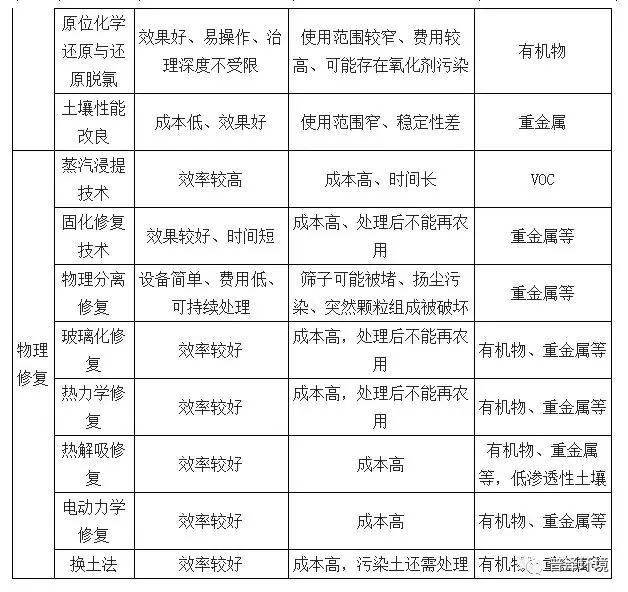
China's urban land pollution mainly comes from the petroleum industry, coal industry, steel industry, chemical industry, and light industry industries such as pharmaceuticals, papermaking, medicine, and textiles. These major sources also constitute the main market for soil remediation in my country. At the same time, extensive agricultural development methods have also caused a lot of soil pollution.
In terms of severity, as mineral resources continue to be excavated, soil pollution in mining areas associated with the above-mentioned industries has become more and more serious. According to survey statistics, the current number of contaminated sites nationwide is between 1 million and 2 million, and the total capacity of the domestic soil remediation market exceeds one trillion yuan. Among them, the restoration ratio of the mining area is 5%.
In recent years, the country has paid increasing attention to environmental protection and governance, and has also increased support for soil restoration. Affected by the "Ten Ten Articles" and other policies, the scale of the soil remediation industry is increasing year by year. The scale of the industry in 2015 was only 1.7 billion yuan, and it increased to 15.1 billion yuan in 2017. It is estimated that the scale of the soil remediation industry is expected to reach 100 billion yuan in 2025, and the market prospect of 100 billion yuan is promising. With the increasingly serious pollution in our country, the soil remediation industry is gradually emerging, and the soil remediation industry chain is gradually improving.
Estimated status of soil restoration scale in China from 2012 to 2025
With the increasing environmental protection requirements of the country and society, accurate monitoring of soil pollution risks has become the choice of those involved in soil remediation. Therefore, the preliminary work of soil remediation-soil monitoring and soil pollution remediation risk assessment will develop explosively.
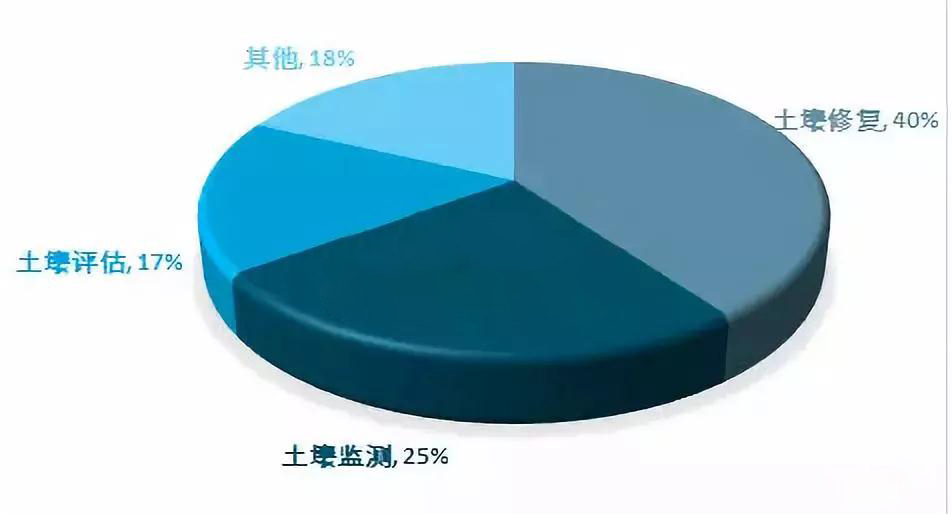
There are currently few participants in the field of soil monitoring, including scientific research institutes, small monitoring companies and large soil remediation companies. Therefore, among the soil remediation companies, "all-round" companies can conduct contaminated site surveys, risk assessments, remediation construction, etc., and their business basically covers all aspects of soil remediation. They have competitive advantages and become beneficiaries of the rise and development of the soil remediation industry.
In 2018, under the background of the cold winter of capital and the country's advancement and the retreat of the people, the pressure on environmental protection industry companies increased sharply, but the soil remediation market still maintained steady release and development.
In 2018, the central government allocated 6.5 billion yuan of special funds for soil pollution prevention and control, which was basically the same as the number implemented in 2017. The national key research and development plan "Soil Pollution Causes and Treatment Technologies on Sites" (2018-2022), in 2018, the state allocated 608 million yuan, which will promote the research on basic theories and applied technologies of the soil remediation industry and provide major scientific and technological support for the development of the industry.
According to incomplete statistics from public channels such as China Procurement and Bidding Network and China Procurement and Recruitment Network, the scale of the soil remediation market in 2018 was approximately more than 10 billion, of which industrial contaminated site remediation projects still accounted for the main part, the contract value was approximately 7 billion, and the scale of funds Increasingly concentrated on large projects, according to statistics, large projects of more than 100 million yuan account for about half of the market size. Key words and screening queries were conducted through the Enterprise Check APP. In 2018, there were 3,830 soil remediation companies. The soil remediation industry has become one of the most eye-catching sub-sectors of the environmental protection industry.
However, there is still much room for improvement in soil remediation in China. At present, China’s soil remediation market can be subdivided into three major segments: industrial contaminated site remediation, agricultural land remediation, and mine remediation. The soil remediation market can be subdivided into industrial contaminated site remediation, There are three major areas for agricultural farmland restoration and mine restoration. Industrial contaminated sites are about 300,000 to 500,000. Estimated at the cost of 3 million yuan per piece of restoration, the potential market is about 0.9 to 1.5 trillion. At the same time, a large number of mines are to be rehabilitated and the actual warehouses are to be excavated.
At present, domestic soil remediation enterprises can be divided into three categories. The first category is professional enterprises, such as construction repair, high-energy environment, Zhongke Dingshi Environmental Engineering Co., Ltd., CECEP Earth Environmental Remediation Co., Ltd., Beijing Jinyu Mangrove Environmental Technology Co., Ltd., etc.; Other environmental protection companies in soil remediation, such as Yongqing Environmental Protection, Sangde Environmental Protection, Dongjiang Environmental Protection, etc.; the third category is foreign-funded companies, including Japan's Dowa, British ERM, and Ao Shi Analysis. As the soil remediation market is in its infancy and growth in my country, there are relatively few participating companies, and ordinary soil remediation owners tend to choose companies with technical advantages, past performance and financial strength, and the overall marketization of the soil remediation market is relatively low.
According to market statistics, as of the end of 2017, among the 775 relevant sample projects collected, a total of 334 projects undertaken by 176 practitioners have announced the transaction amount or transaction unit price, and the cumulative transaction amount is 7261.673 million yuan. Among the 176 undertaking units, 51 have a cumulative transaction value of less than 1 million yuan, accounting for 29%; 119 companies have a total of less than 10 million yuan, accounting for 68%; 162 companies have a total of less than 100 million yuan, accounting for 92% %. As of the data collected at the time of collection, 14 units had a cumulative transaction value of more than 100 million yuan; among them, 3 units had a cumulative transaction value of more than 500 million yuan, accounting for 2%. According to statistics, the total transaction value of the three companies was 3,320.17 million yuan, accounting for 45.7% of the total transaction value.
The distribution of this data objectively reflects the pyramidal distribution pattern of the soil pollution control and restoration industry. The soil pollution control and restoration industry has experienced 5-10 years of development, and the companies that have been working for a long time have further clarified their positioning in the industry chain. Among them, there are a large number of companies focusing on investigation, evaluation, analysis and testing projects, but the cumulative amount of undertaken is relatively small, mainly at the bottom of the pyramid; there are a large number of companies mainly engaged in contracting small and medium restoration projects, mainly in the middle; There are relatively few companies dominated by engineering contracting, mainly at the top of the pyramid.
The three units with a cumulative transaction value of more than 500 million yuan include the cumulative publicized transaction value of construction repairs of 2.273.61 million yuan, the cumulative publicized transaction value of 531.74 million yuan in the high-energy era, and the cumulative publicized transaction value of CECEP Dadi Environmental Remediation Co., Ltd. of 514.82 million yuan. The accumulated transaction amount was RMB 3,320.17 million, accounting for 45.7% of the total transaction amount.
Among the 233 project undertaking units that have conducted economic nature analysis, a total of 160 have announced the cumulative transaction amount, totaling 6,328,849,600 yuan. Among the three main groups of practitioners in the soil pollution control and restoration industry, the cumulative transaction value of state-owned enterprises is about 4.2 billion yuan, accounting for 66.5%; the cumulative transaction value of private non-listed companies is 1.11 billion yuan , Accounting for 17.5%; the cumulative transaction value of listed companies or their direct affiliates (sole proprietorship or holding) is about 986 million yuan, accounting for 15.6%. The three transactions totaled 6.302 billion yuan, accounting for 99.6%. At present, state-owned economic enterprises are the main project undertaking units in the soil pollution control and restoration market. This may be related to the status quo that the industry is in the early stage of development and is dominated by the government, while listed companies have high brand awareness and mature applications Technology and strong financial strength have performed quite well.
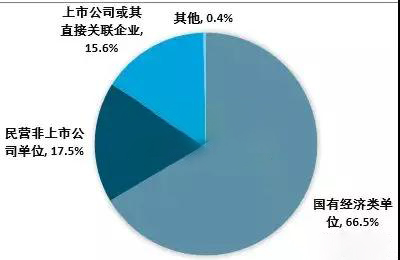
The "2019-2025 China Soil Remediation Industry Investment Potential Analysis and Future Prospect Forecast Report" released by Zhiyan Consulting pointed out that the harm caused by contaminated sites is mainly aimed at human health and the ecological environment. After the factory is relocated, according to the city's planning, such a site may be planned for commercial, residential, park, school and other types. If the land is not completely repaired, it is equivalent to planting a time bomb. Especially the land planned for residence and school, because people, especially children, will be exposed to pollutants for a long time, it will have serious adverse effects on health. In addition, pollutants in the soil will slowly penetrate into the groundwater over time, affecting the groundwater environment. If this groundwater is a local source of drinking water, it will pose a direct threat to human health.
Industrial contaminated sites are an inevitable product of urban development and have become a pain in the city. In the process of suburbanization and de-urbanization in cities in developed countries such as Europe and the United States, a large number of "brownfields" left over due to the relocation of industrial enterprises have also appeared. Since the 1970s, developed countries such as Europe and the United States have taken a series of measures to deal with such environmental problems, including formulating policies and regulations, compiling industry standards, setting up restoration funds, and encouraging restoration technology and equipment innovation. At present, my country has also issued a series of instruction manuals from investigation to treatment and restoration for industrial contaminated sites, providing policy support for the management of urban contaminated sites. It is believed that as people pay more attention to the problem of contaminated sites and the innovation of soil remediation technology, the contradiction between it and urban construction will also be eased.
In March 2019, an explosion accident occurred in the Xiangshui No. 1 Chemical Industry Park in Yancheng, Jiangsu, which caused a wide range of public opinion. Jiangsu began to strictly investigate chemical companies and formulated relevant drafts for the rectification and relocation of chemical companies. After the explosion, Jiangsu Province subsequently issued the "Jiangsu Province Chemical Industry Remediation and Improvement Plan (Draft for Comment)." The plan proposes that the number of chemical companies in the province will be reduced to 2,000, and the number of chemical companies will be controlled to less than 1,000 by the end of 2022, and a comprehensive evaluation of 50 chemical parks in the province will be required. According to the evaluation results, the number will be reduced to 20. In principle, all 34 companies within 1 km along the main and tributaries of the Yangtze River and outside the chemical park will withdraw before the end of 2020. At the same time, the curtain of safety production inspections of chemical enterprises across the country is also continuing to open. Traditional chemical provinces such as Shandong and Henan have begun a new round of inspections.
On the whole, since the “8.12” Tianjin explosion in 2015, the state has paid more and more attention to the safety of chemical and hazardous chemicals. Every year, the relevant chemical safety system is revised according to the situation, and the supervision and punishment of various safety production are strengthened. However, two major chemical safety accidents occurred. In the future, the continued high pressure of safe production in the chemical industry will become the norm, and the removal of chemical parks from densely populated areas will also become an irreversible trend. With this, the "brownfields" left behind after the chemical parks are moved will be unreversible. The soil remediation market has a significant pulling effect. It is expected that in the next few years, my country’s soil remediation market will transform from the current mine remediation market to a pattern of simultaneous mine and chemical site remediation.
 TEL:13906146128
TEL:13906146128


